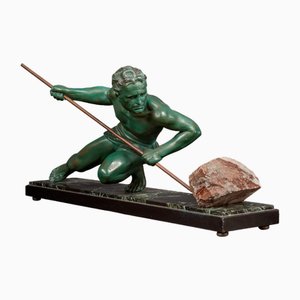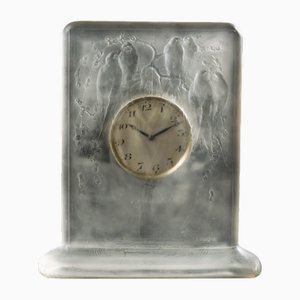Structure and Materials:
This Ethiopian icon is a wooden diptych cross, finely carved and painted. The two parts of the cross are decorated inside and out, with meticulous detail carved into the wood.
Left Pane:
- The upper part shows a central figure, probably Christ or a saint, with a serene face and expressive eyes. He holds an open book with scriptures in Ge'ez, the liturgical language of the Ethiopian Orthodox Church.
- Around this central figure, several other figures, possibly apostles or disciples, are depicted looking upward with expressions of devotion.
- The background is colored yellow and green, creating a strong contrast with the brown and green dresses of the characters.
- In the book it is written: in Ethiopian it is: "ንቁ ተመክሩ ሰባት ተላልቃ ጥራይ"; In English, this translates to: “Arise and preach the good news to all nations.” This text appears to be a message from Jesus to his disciples, asking them to spread his teaching.
- At the top it is written: The text at the top of the icon is written in Ge'ez, "ክርስቶስ አምላክ ነው"; In French, this translates to: “Christ is God”
Right Pane:
- The central figure is again Christ or a saint, this time in a posture of blessing, with raised hands. The lines are similar to those in the figure on the left panel.
- The figures surrounding Christ, perhaps saints or apostles, look towards him with expressions of adoration.
- The background here is also yellow and green, with green and red dresses for the characters.
- At the top he writes: The transcription is: “ኢየሱስ በር: ኀያል እግዚአብሔር”; In French, this translates to: “Jesus is mighty God”;
-
Exterior of the Cross:
The exterior of the cross's flaps is also engraved with intricate geometric designs, adding to the richness of the artifact.
History of Ethiopian Icons
Origins and Influence: Ethiopian icons have their origins in Orthodox Christian traditions, influenced by early contact with Christianity in the 4th century during the reign of King Ezana of Aksum. Ethiopian Christianity has retained unique elements, fusing Byzantine, Coptic and local influences.
Features:
- Ethiopian icons are generally made of wood, sometimes canvas, and are often small, designed to be transportable.
- They are richly colored with natural pigments and show a strong Byzantine influence in style, with stylized figures with large, expressive eyes and distinctive facial features.
- Scenes depicted include biblical episodes, lives of saints, and figures of the Virgin Mary and Christ, often in postures of blessing or devotion.
Liturgical and Cultural Function:
- Icons play a central role in the liturgical life of the Ethiopian Orthodox Church, used in churches, homes, and during religious processions.
- They are also an object of personal veneration, considered windows to the divine, allowing the faithful to connect spiritually with the holy figures depicted.
Production and Techniques:
- Icon production was traditionally the domain of monks and artisans trained in monasteries. They used egg painting techniques and mineral pigments to create vibrant, long-lasting colors.
- Motifs and compositions are often dictated by traditional models, ensuring stylistic and theological continuity across the centuries.
Conclusion
This Ethiopian icon is a remarkable example of traditional religious art, incorporating stylistic and iconographic elements deeply rooted in Ethiopia's Christian history. It illustrates the unique fusion of local and foreign influences, creating a distinctive style that continues to play a vital role in Ethiopia's religious and cultural practice.




















Get in Touch
Make An Offer
We noticed you are new to Pamono!
Please accept the Terms & Conditions and Privacy Policy
Get in Touch
Make An Offer
Almost There!
To follow your conversation on the platform, please complete the registration. To proceed with your offer on the platform, please complete the registration.Successful
Thanks for your inquiry, someone from our team will be in touch shortly
If you are a Design Professional, please apply here to get the benefits of the Pamono Trade Program